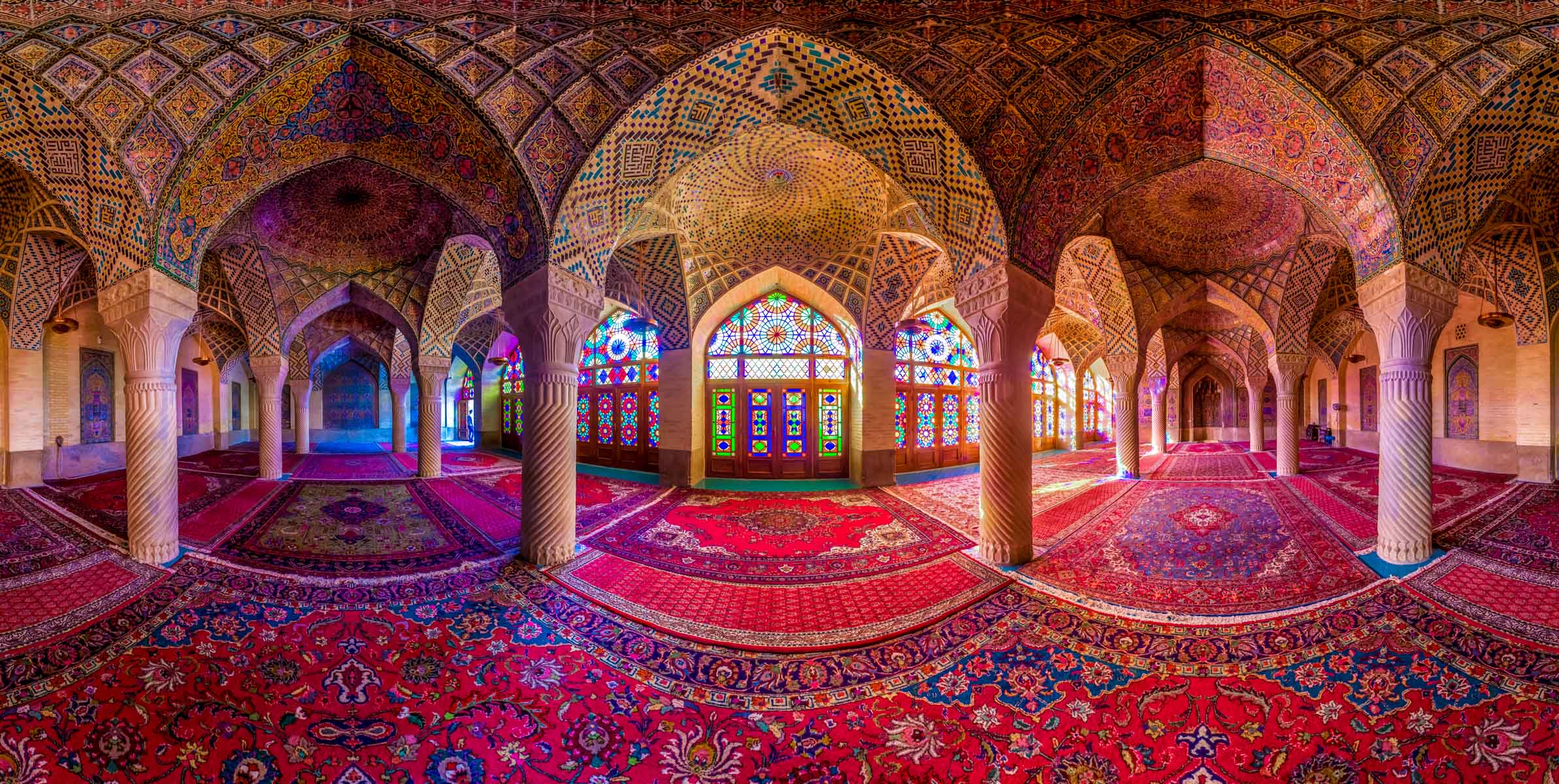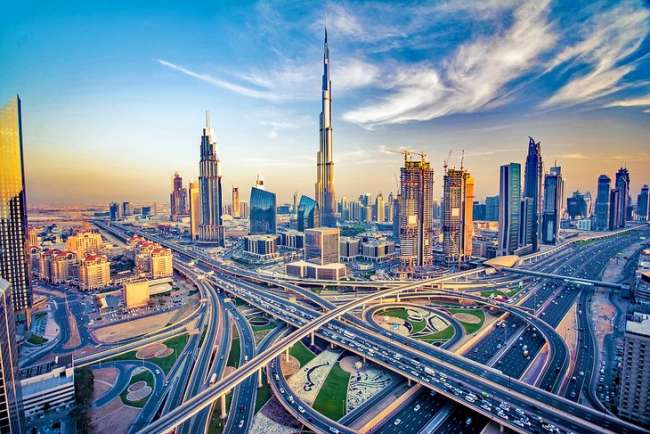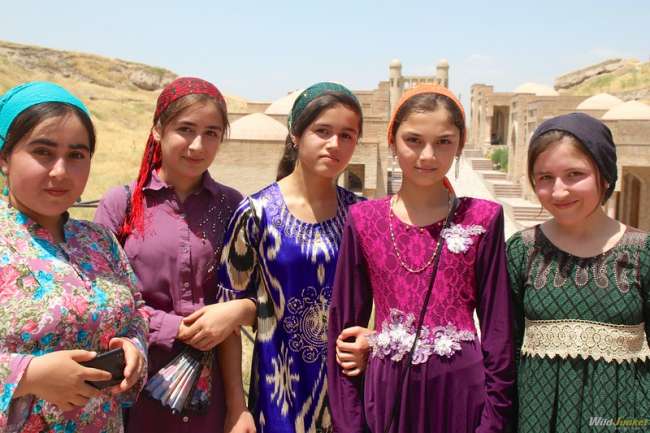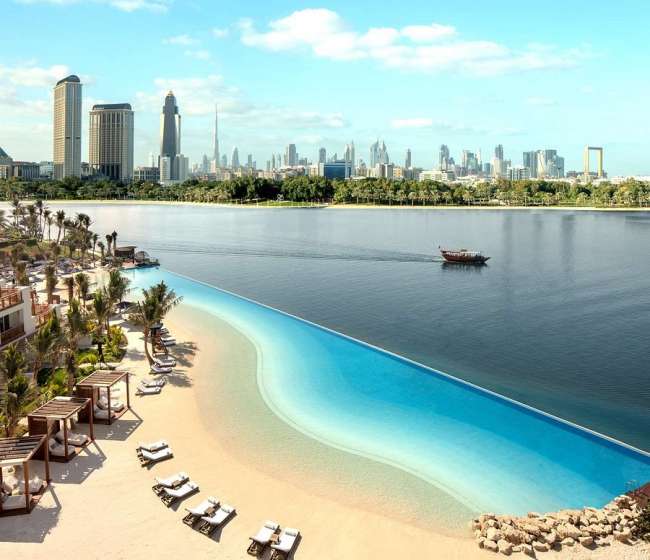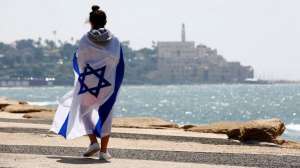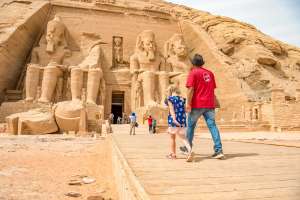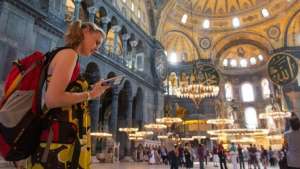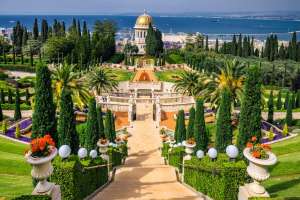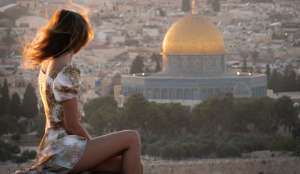Iran is one of those rare destinations that feels like a living museum — a vast land where history, art, and breathtaking landscapes merge into a single unforgettable experience. Despite its rich culture and unmatched hospitality, the beauty of Iran is still greatly underappreciated on the global stage. Those who’ve never stepped foot here often only know the country through headlines, missing its soul — the warmth of its people, the astonishing architecture, and the deeply layered stories whispered through every ancient stone.
Having journeyed across Iran for weeks, I can confidently say that it deserves a place on every serious traveler’s bucket list. It’s a nation that moves between centuries with ease — from its bustling bazaars and poetic gardens to its silent deserts and grand palaces that once ruled empires.
The roots of Iran’s history reach as far back as 4000 BC, stretching across dynasties that helped shape human civilization. Many of Iran’s most famous attractions are the timeless remnants of this powerful past — magnificent monuments and historical structures that still stand tall, narrating tales of kings, conquests, art, and philosophy.
For those visiting for the first time, most travelers follow what’s known as the “classic central route,” a trail that includes Tehran, Isfahan, Shiraz, Yazd, and sometimes Kerman. Each of these cities reveals a different facet of Persian heritage — from royal elegance to poetic serenity, from desert wonders to architectural brilliance.
Historic Places to Visit in Iran in 10 Days
If you plan a 10-day trip through the heart of Iran, you’ll find that the most remarkable historical sites lie along this central corridor. Still, if time allows, venturing into Khuzestan province in the southwest will reward you with some of the earliest traces of ancient Persia — old settlements, archaeological treasures, and the whisper of civilizations long gone.
To help you travel through the past while walking in the present, here’s a detailed list of Iran’s most iconic historical landmarks — a guide through time that every traveler should experience.
1. Persepolis
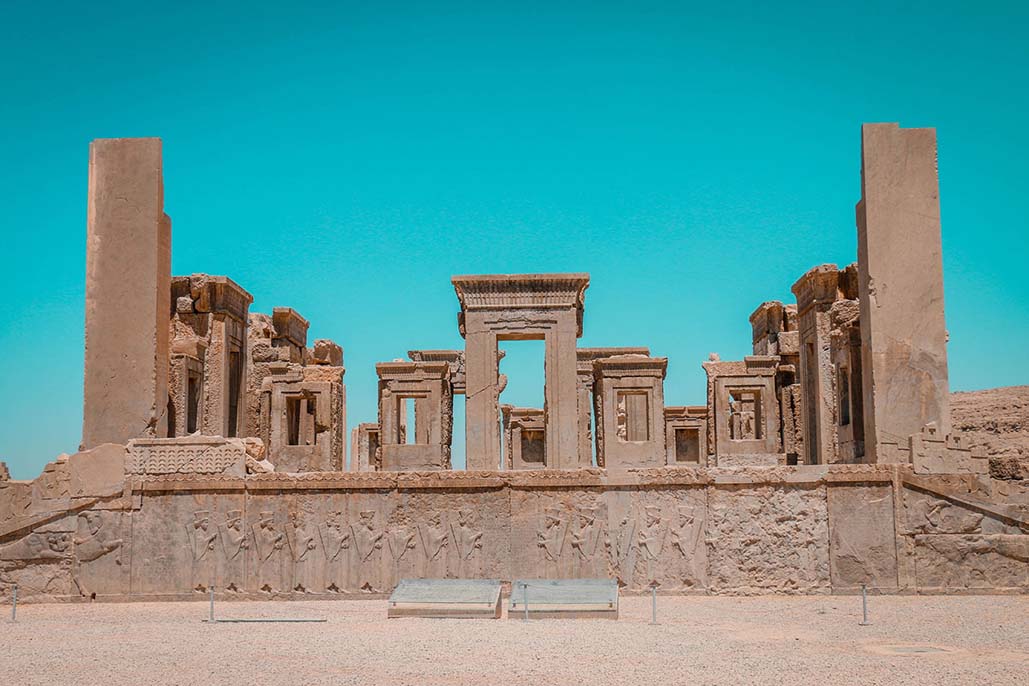
Persepolis is not just a place to visit — it’s a place to feel. Towering above the plains of Fars province, this ancient ceremonial capital remains the ultimate symbol of Persian pride and architectural genius. Built around 520 BC, roughly 60 kilometers from Shiraz, Persepolis served as the magnificent heart of the Achaemenid Empire, one of the greatest powers the ancient world had ever seen.
The city was a masterpiece of planning and artistry, constructed over 150 years by successive Achaemenid kings, most notably Darius the Great. During his reign, the city reached its peak splendor, its grand staircases and reliefs celebrating a united empire that stretched from Egypt to India. Though Alexander the Great later looted and burned it, Persepolis still stands in awe-inspiring condition, its ruins whispering stories of power and loss.
Spend at least two hours wandering through the complex, letting the monumental columns and intricate carvings transport you back to a time when Persia ruled with elegance and intellect. To avoid the midday heat and crowds, early morning or late afternoon visits are ideal — when the low sunlight paints the ancient stones gold.
2. Naqsh-e Jahan Square
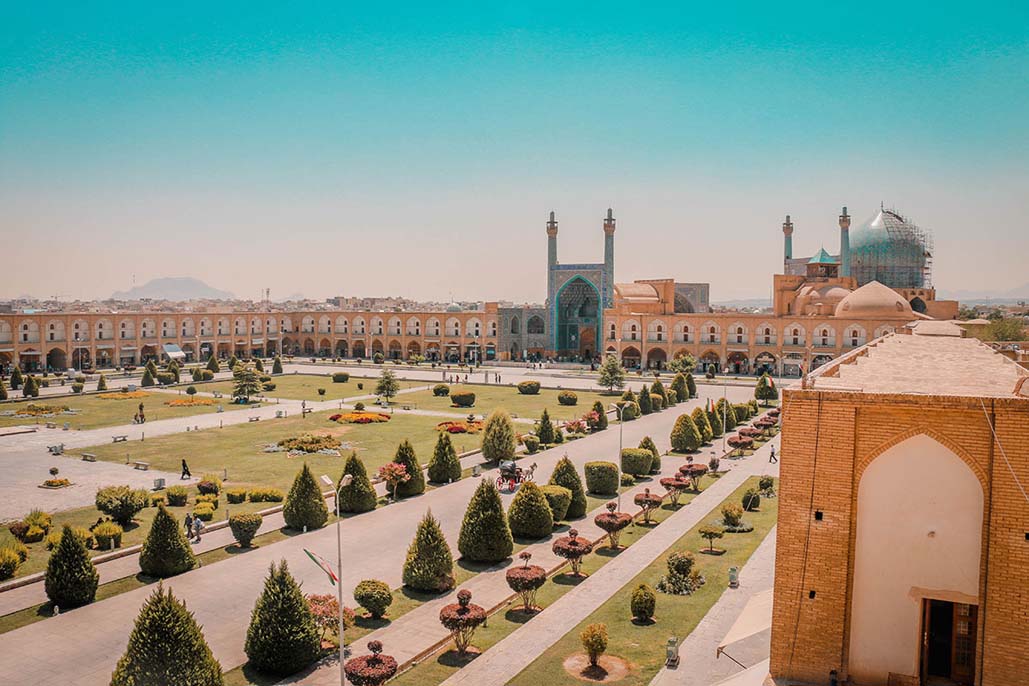
Often called “The Pattern of the World,” Naqsh-e Jahan Square in Isfahan is a celebration of harmony, beauty, and human artistry. European travelers like Chardin once described Isfahan as “half the world,” and standing here, it’s easy to understand why.
When the Safavid dynasty established Isfahan as its capital in the 16th century, this massive square became the empire’s centerpiece — a symbol of Persian unity and vision. Surrounded by masterpieces such as the Shah Mosque, Sheikh Lotfollah Mosque, Ali Qapu Palace, and the Grand Bazaar, it remains the living heart of the city.
In the evenings, especially during summer, Naqsh-e Jahan transforms into a joyful gathering space for families and friends. Locals bring tea and food, spreading carpets on the grass, while the square glows under the fading light. Grab a traditional saffron ice cream or a hot glass of tea, and sit among them. It’s in these moments that you’ll feel what Iranian culture truly means — connection, community, and contentment.
3. Yazd Old Town

The ancient city of Yazd feels like stepping into another world — a labyrinth of winding alleyways, earth-toned walls, and whispering windcatchers that tell tales of ingenuity. Recognized by UNESCO for its exceptional preservation, Yazd’s old town is one of the most mesmerizing places to explore in Iran.
Lose yourself in its maze-like lanes, where centuries-old mud-brick houses open into hidden courtyards, and rooftop cafes offer views of domes, minarets, and the distant desert horizon. The air smells faintly of clay and spices, and every wooden door seems to hide a story.
Here, architecture meets adaptation. The city was built to survive the desert climate — with wind towers cooling homes naturally and qanat systems channeling underground water. Yazd is a reminder of how human creativity can thrive even in the harshest environments. Take your time, put the map away, and simply wander. That’s when Yazd truly reveals itself.
4. Golestan Palace, Tehran
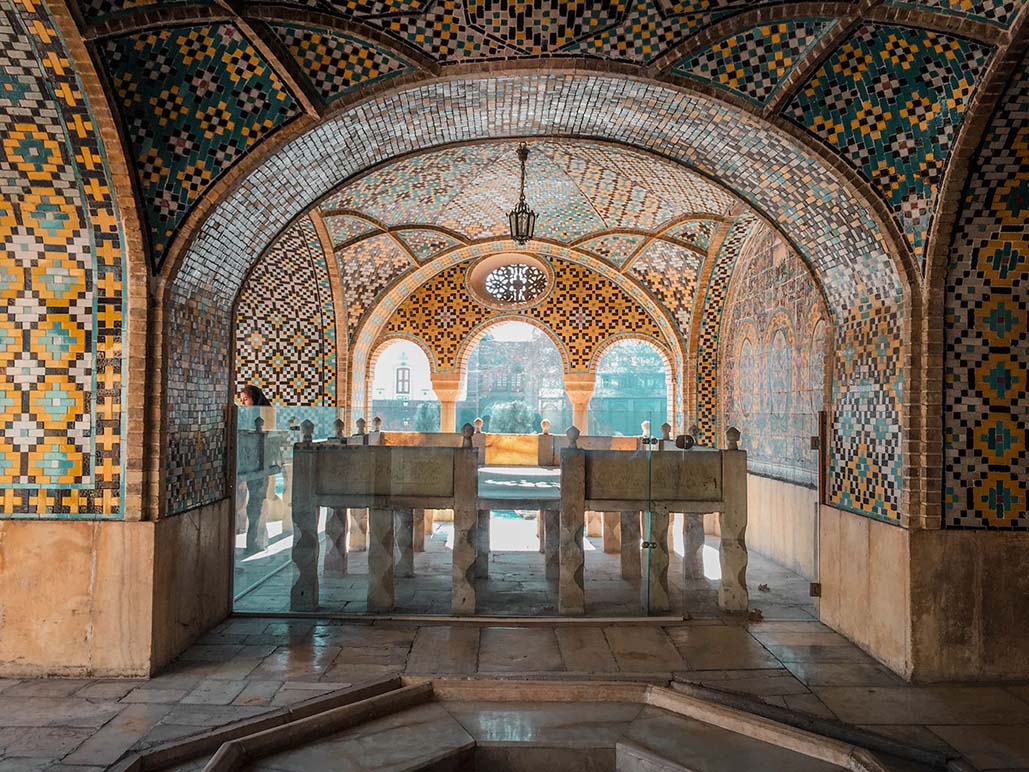
In the bustling heart of Tehran lies Golestan Palace — a jewel from the Qajar era that bridges Persian tradition with European influence. When Agha Mohammad Khan Qajar declared Tehran the capital in the 18th century, this complex became the royal residence and political center.
Golestan Palace showcases the refined taste of the Qajar kings, particularly Naser al-Din Shah, who was inspired by his travels across Europe. The architecture blends Persian tilework, mirrored halls, and Western decorative arts — an elegant fusion that marked a new cultural chapter.
Among its many buildings, the Shams al-Emarat (Edifice of the Sun) once stood as Tehran’s tallest structure, a marvel of its time. Today, visitors can explore its multiple sections, each requiring separate tickets, and stroll through gardens adorned with vivid tiles and fountains. Don’t miss the Hall of Mirrors — a breathtaking room where light dances endlessly across walls of glass and mosaic.
5. Imam Mosque of Esfahan
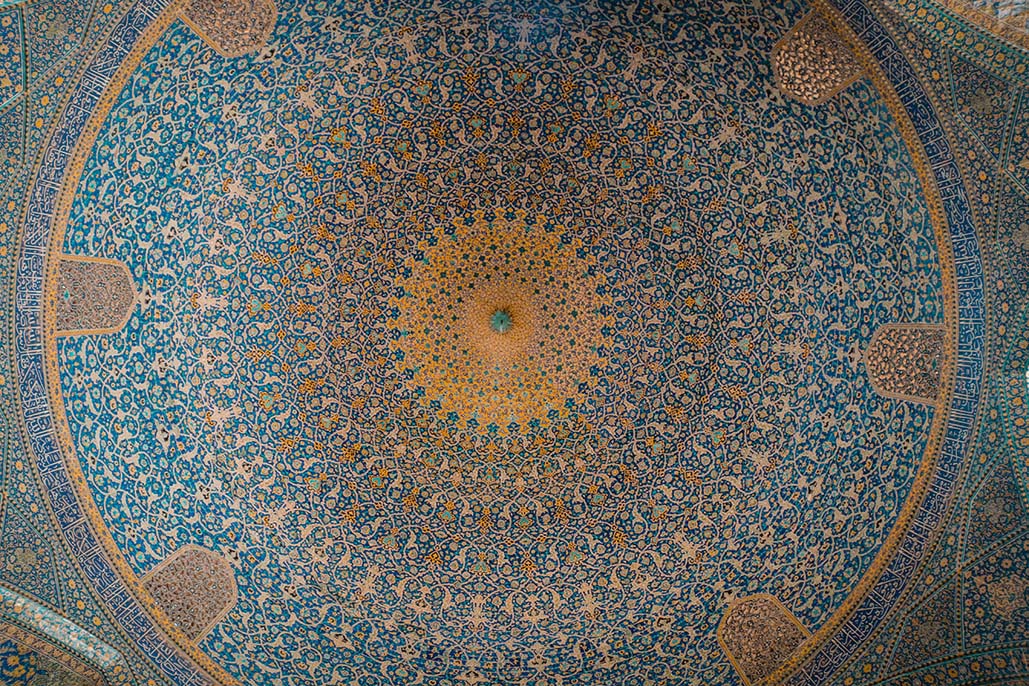
Commissioned by Shah Abbas I during his 25-year reign, the Imam Mosque (formerly known as Shah Mosque) is one of the crowning achievements of Persian architecture. Although the Shah never lived to see its completion, his vision continues to mesmerize visitors centuries later.
This mosque, located at the southern edge of Naqsh-e Jahan Square, represents the very soul of the Safavid era — an era defined by devotion, artistry, and symmetry. The majestic blue-tiled entrance, decorated with Quranic inscriptions and intricate arabesques, draws you in like a magnet. Once inside, the acoustics, the geometry, and the tilework form a spiritual experience.
Stand beneath its immense dome and whisper — the echo travels perfectly across the vast hall, a sign of architectural brilliance far ahead of its time. Whether you are religious or not, there’s something deeply calming about being in this place, surrounded by centuries of silent prayers.
6. Jameh Mosque of Yazd

Right in the center of Yazd’s old town rises the stunning Jameh Mosque, its blue-tiled minarets visible from nearly every rooftop. The mosque’s current structure dates back to the 14th century, though earlier foundations existed long before.
Its slender minarets — the tallest in Iran — reach elegantly toward the sky, while its entrance portal is decorated with some of the finest tile artistry in the country. The patterns shift subtly in color depending on the light, creating an almost hypnotic effect.
Step inside and you’ll be surrounded by serenity. The cool air, the soft echoes, and the delicate calligraphy create a feeling of timeless devotion. It’s not just a place of worship — it’s a monument to beauty, patience, and craftsmanship.
7. Sultan Amir Ahmad Bathhouse, Kashan
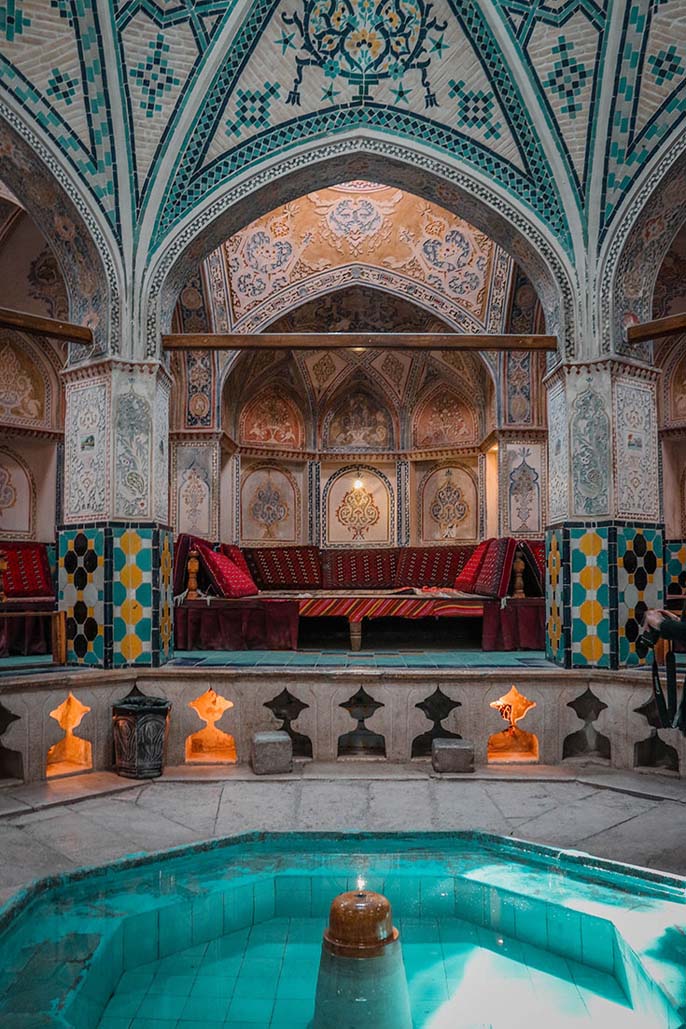
Bathhouses in Iran were far more than functional spaces — they were the social hubs of their time. People came here to relax, talk, and share news long before modern cafés existed. The Sultan Amir Ahmad Bathhouse in Kashan is perhaps the most exquisite example of these Persian hammams.
The bathhouse, with its turquoise domes and intricate plasterwork, offers a glimpse into a forgotten lifestyle. The chambers are decorated with beautiful tiles and vaulted ceilings, designed to trap warmth and reflect soft light.
While the Ganj Ali Khan Bathhouse in Kerman is more extensive, the Sultan Amir Ahmad Bathhouse stands out for its elegance. After exploring the interior, climb up to the roof — the view over Kashan’s old town is absolutely breathtaking, especially at sunset.
8. Necropolis (Naqsh-e Rostam), Shiraz
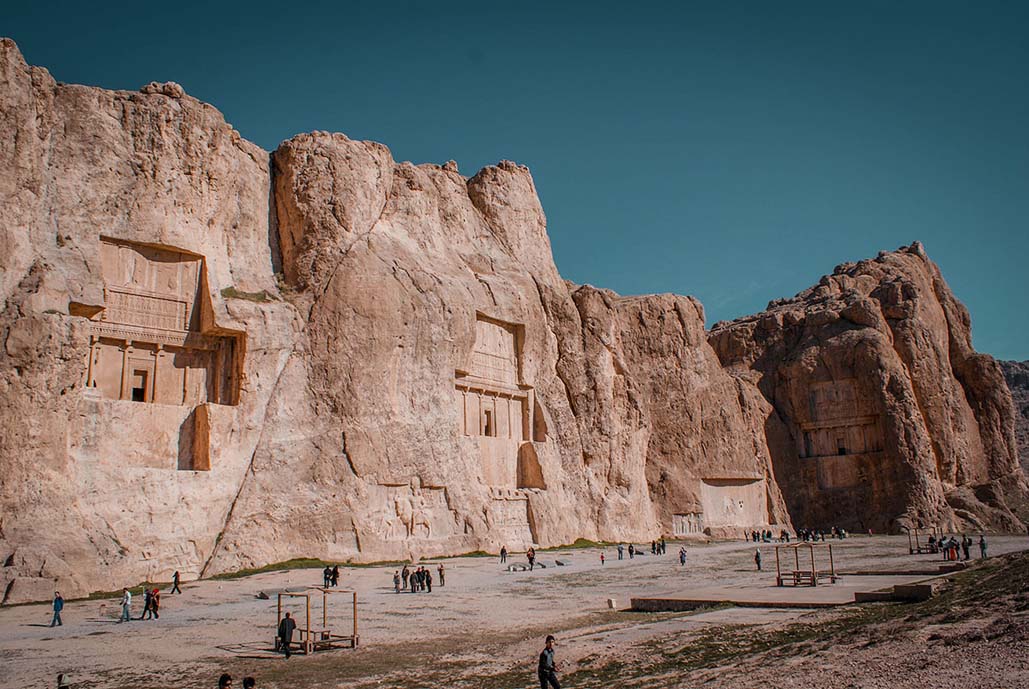
Just a short drive from Persepolis lies another wonder of ancient Persia — Naqsh-e Rostam, or the Necropolis. This sacred site serves as the eternal resting place of four mighty Achaemenid kings: Darius I, Darius II, Xerxes I, and Artaxerxes I.
Their monumental tombs are carved directly into the cliff face, each one shaped like a cross with intricate reliefs depicting royal ceremonies and divine guardians. Below them, you can see grand Sassanid carvings celebrating victories and religious scenes — a dialogue between two great Persian dynasties across time.
Standing before these tombs, one can’t help but feel the weight of history pressing softly in the air — the ghosts of empires, silent yet ever present.
9. Sheikh Lotfollah Mosque, Esfahan
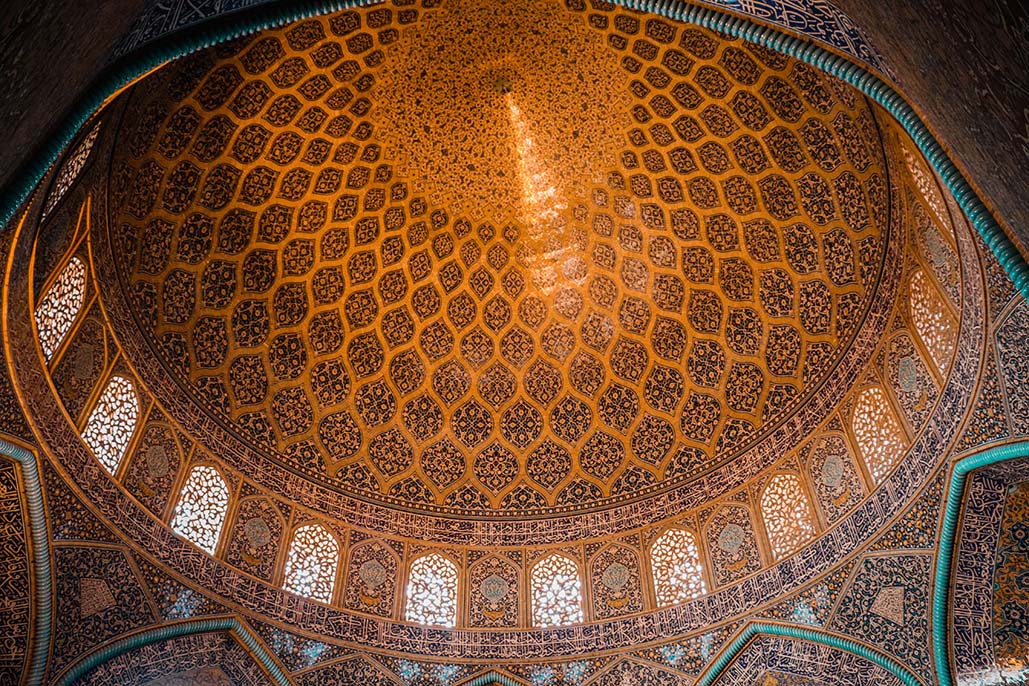
On the eastern side of Naqsh-e Jahan Square stands a delicate jewel of Safavid art — the Sheikh Lotfollah Mosque. Unlike other grand mosques designed for public worship, this one was built exclusively for the royal family and women of Shah Abbas’s harem, giving it a sense of intimacy and quiet elegance.
Constructed in the early 17th century, its exterior may appear understated compared to the Imam Mosque, but step inside, and your breath catches. The interior dome glows with golden hues, decorated in arabesque and floral patterns that change color throughout the day as sunlight filters in. Its light-blue mosaics shimmer, creating the illusion of movement.
One of the most remarkable architectural features of this mosque is the way it bends — a subtle turn aligns it perfectly toward Mecca while maintaining harmony with the square’s geometry. The absence of minarets and courtyards adds to its mysterious charm. Many photographers and artists consider the Sheikh Lotfollah dome to be one of the most photogenic in the entire Islamic world — and when you stand beneath it, you’ll understand why.
10. Nasir-ol Molk Mosque (The Pink Mosque), Shiraz
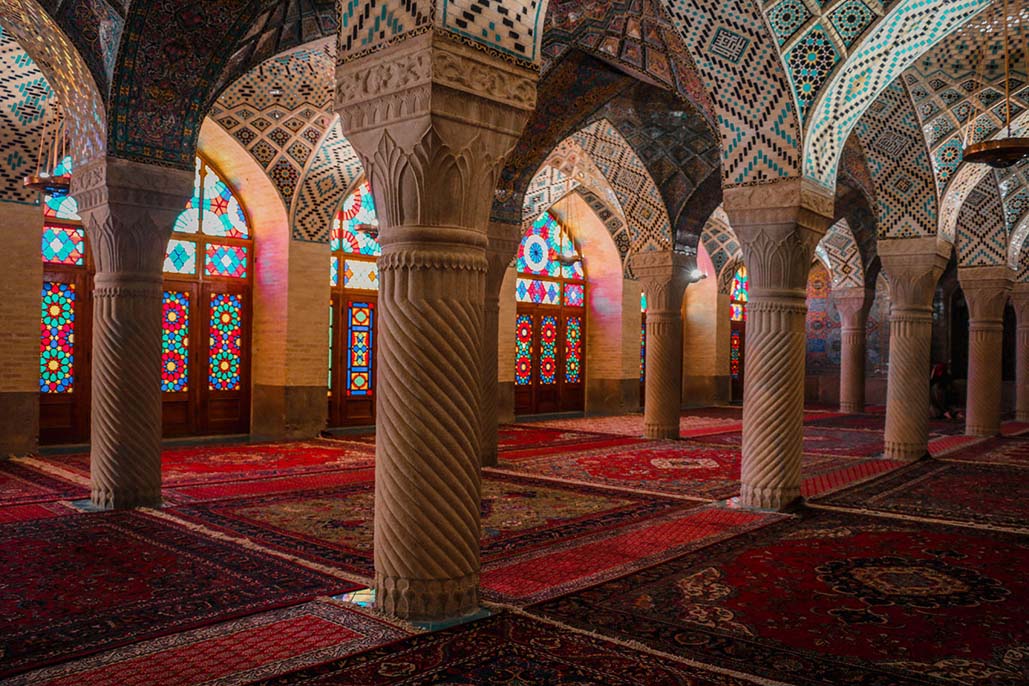
Few places in the world can rival the sheer magic of the Nasir-ol Molk Mosque in Shiraz — often called the “Pink Mosque” because of its rosy-hued tiles and kaleidoscopic stained glass. Step inside during the early morning hours, and you’ll find yourself in a world of color — sunlight streaming through vibrant windows, scattering rainbows across the Persian carpets.
Built during the late Qajar dynasty in the 19th century, this mosque is a celebration of detail and devotion. Every inch of its walls, ceilings, and arches is adorned with intricate floral designs and Persian calligraphy, with pink tones that feel warm and alive.
The highlight of the mosque is its prayer hall, where the play of light and shadow transforms the space into something almost otherworldly. Visitors often sit quietly on the floor just to watch the colors shift with the rising sun — a peaceful dance of art and nature. Outside, the finely crafted muqarnas in the entrance portal are among the most elegant examples in Iran. If you visit only one mosque in Shiraz, make it this one.
11. Tower of Silence, Yazd
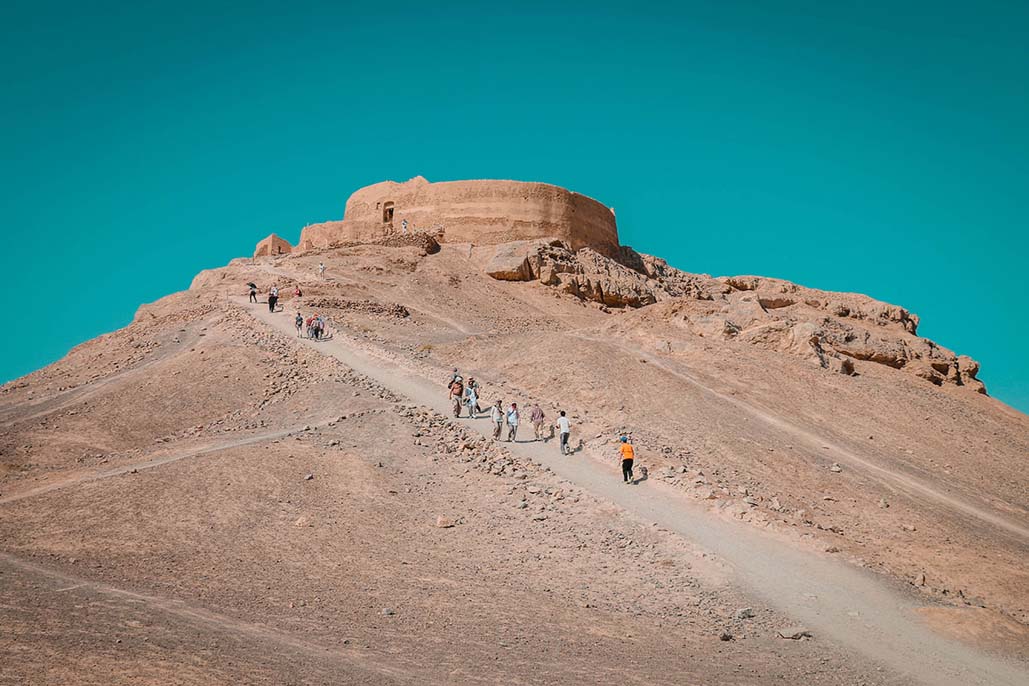
Just outside Yazd lies a haunting yet fascinating site known as the Tower of Silence — a place deeply rooted in Zoroastrian tradition. For centuries, Zoroastrians brought their dead to these circular towers, set high on barren hills, so that sunlight and birds of prey could purify the bodies without defiling the earth.
In Zoroastrianism, soil is sacred and must not be contaminated by death. Thus, these “Dakhmas” were both practical and spiritual — a ritual born from respect for nature and purity. Today, the practice has long been abandoned, but the tower remains as a powerful reminder of one of humanity’s oldest religions.
Climb to the top and you’ll be rewarded not only with the quiet stillness of history but also with a sweeping view over Yazd’s desert landscape. The city below glows like a mirage, framed by the soft orange tones of the setting sun. It’s a sobering, beautiful place — one that invites reflection on life, death, and eternity.
12. Shazdeh Garden, Kerman

Hidden in the harsh desert of Kerman province lies one of Iran’s most enchanting green havens — the Shazdeh Garden, or “Prince’s Garden.” It’s the perfect example of how Persian architecture transforms even the most barren land into an oasis of tranquility.
Built during the Qajar period, the garden stretches out in perfect symmetry along a gentle slope, with water cascading through terraced fountains fed by ancient qanats (underground channels). The sound of water flowing between the rows of cypress trees brings an instant calm to anyone who walks here.
The small mansion at the top once served as a royal retreat, offering breathtaking views of the garden and desert beyond. Today, locals come here for picnics, escaping the dry winds for a few hours of shade and serenity. Visiting Shazdeh Garden at sunset is especially rewarding — the golden light reflects off the fountains, making the whole place glow as though it were enchanted.
13. Khajoo Bridge, Esfahan

Among the many architectural marvels of Esfahan, the Khajoo Bridge stands out as both a masterpiece of design and a symbol of community. Built around 1650 under the reign of Shah Abbas II, the bridge once served as a functioning dam, a walkway, and a royal pavilion — a perfect example of Persian ingenuity.
Stretching across the Zayandeh River, it features 23 arches and beautifully tiled alcoves. Even when the river runs dry — as it often does due to modern dams and drought — the bridge remains alive with energy. Locals still gather under its arches, singing old Persian songs as echoes dance along the vaulted ceilings. It’s a magical experience to sit there at twilight, hearing their voices blend with the rustle of the wind.
Though the river’s flow is now seasonal, if you visit in spring, you might catch the water shimmering beneath the arches — a sight that completes the timeless beauty of Esfahan.
14. Tabatabaei House, Kashan
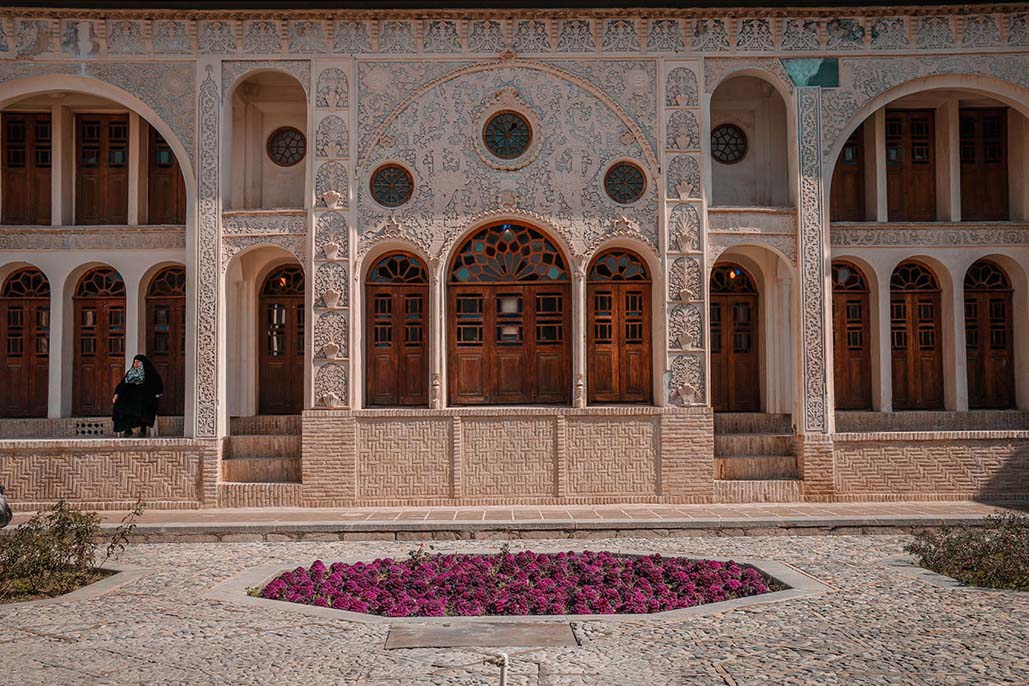
The historic Tabatabaei House in Kashan is one of the most exquisite examples of Persian residential architecture. Built around 1860 for a wealthy carpet merchant, this mansion embodies elegance, sophistication, and a deep respect for privacy and artistry.
Spanning roughly 5,000 square meters, the house contains multiple courtyards, windcatchers, stained-glass windows, and intricately carved stucco decorations. Every detail, from the colorful windowpanes to the stone reliefs on the walls, reflects the refined lifestyle of 19th-century Persian nobility.
The interplay of light and space inside the house is mesmerizing — sunlight filters through colored glass, casting patterned reflections across plaster walls. Visitors often find themselves wandering quietly, captivated by the tranquility that fills each chamber. It’s easy to see why many film directors have chosen this house as a setting for period dramas — it’s not just a building but a living artwork.
15. Babak Fort
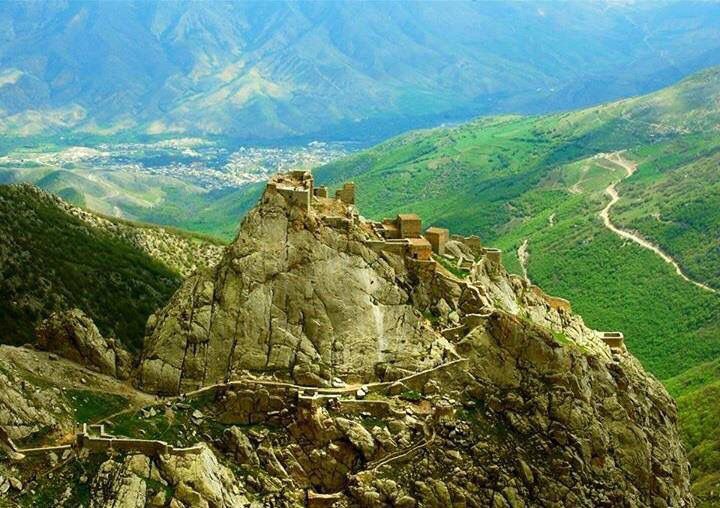
Perched high atop the mountains of East Azerbaijan province, Babak Fort — also known as the Kalibar or Jomhour Fort — stands as a symbol of resistance and bravery. At an elevation of around 2,300 meters, the fort’s dramatic location makes reaching it an adventure in itself.
The fortress dates back to the Sasanian era (224–651 AD) but is most famously associated with Babak Khorramdin, the legendary Persian freedom fighter who led a rebellion against the Abbasid Caliphate in the 9th century. For years, Babak and his followers defended this mountain stronghold, turning it into a powerful symbol of courage and independence.
Climbing up to the fort today is a challenging yet rewarding experience — a winding trek through rugged terrain and breathtaking scenery. Once you reach the top, you’re greeted by sweeping views of the Aras Valley and surrounding peaks, with the ruins of the fortress echoing the spirit of defiance that once lived here. It’s a reminder of Iran’s enduring strength — a nation that has faced countless storms and yet continues to stand proud.
Iran’s beauty is woven through every corner of its land — from deserts and gardens to mosques and fortresses, from ancient civilizations to the warmth of its people. To travel here is to walk through history, to witness the evolution of culture, and to feel connected to something timeless. Whether you wander among the ruins of Persepolis or share tea with strangers in Isfahan, you’ll realize that Iran is not just a place to see — it’s a place to experience with heart and soul.


